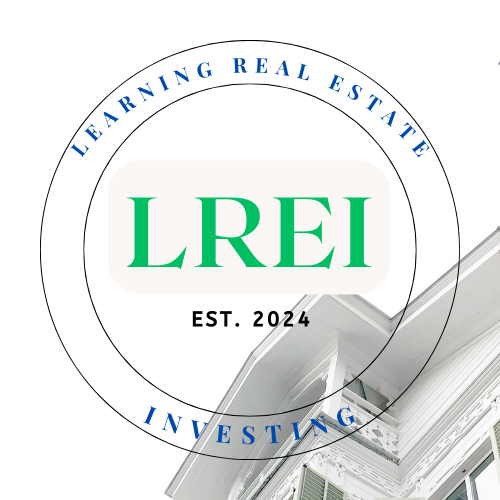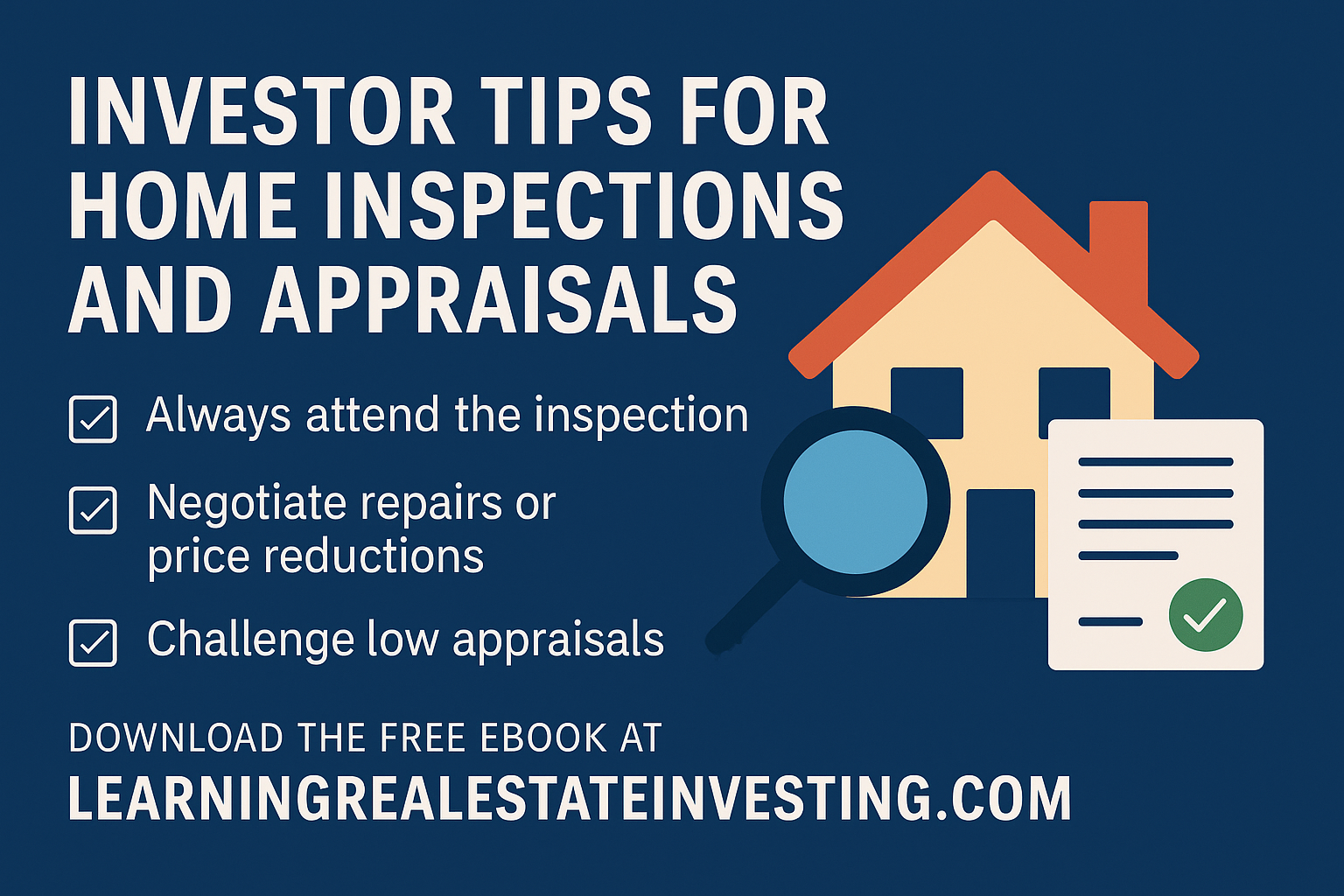Investor Tips for Home Inspections and Appraisals
Inspections and appraisals aren’t roadblocks—they’re tools. Master them, and you’ll protect profits while reducing risk.
Every real estate deal comes down to numbers and risk management. Two of the most important safeguards in any transaction are home inspections and appraisals. Get them right, and you catch hidden problems before they drain your profits. Get them wrong—or skip them altogether—and you could face financial headaches that wipe out your returns.
Want my full inspection & appraisal checklist?
How Inspections Protect Investors
A property inspection is like an x-ray for a house. It goes beyond the cosmetic appearance and uncovers structural and mechanical issues that can turn a deal sour. Experienced investors know inspections are not optional—they’re essential.
- Foundation and structural issues: Repairs here can cost $20,000–$50,000 if missed.
- Roofing problems: A failing roof impacts both value and insurability.
- Electrical and plumbing: Hidden code violations or outdated wiring can stall renovations.
- Pest infestations: Termites or mold can turn a “great deal” into a money pit.
Pro Tip: Always attend inspections in person. Walk with the inspector, ask questions, and take notes. Seeing issues firsthand helps you negotiate more effectively.
Appraisals and Value Protection
An appraisal protects you from overpaying. While inspections focus on property condition, appraisals focus on market value. Lenders require them, but savvy investors go deeper: comparing comps, analyzing local trends, and challenging undervaluations.
- Prevent overpayment: An appraisal ensures you’re not buying above market value.
- Loan approval: The appraised value determines how much financing a lender will provide.
- Negotiation power: A low appraisal can give you leverage to reduce price.
Investor Tips for Inspections
- Hire reputable inspectors, not the cheapest option.
- Document findings with photos for negotiation leverage.
- Prioritize big-ticket repairs (foundation, roof, HVAC) over cosmetic issues.
- Negotiate either repair credits or direct fixes before closing.
Investor Tips for Appraisals
- Provide your own comps to the appraiser if values are rising quickly.
- Highlight renovations or upgrades that may not be visible in comps.
- Challenge undervaluations with clear data from similar sales.
- Build relationships with local appraisers who understand investor strategies.
Case Studies
Case 1: An investor in Atlanta nearly closed on a duplex before the inspection revealed foundation cracks. The repair would have cost $40,000. Instead, the investor negotiated a $25,000 price reduction, saving the deal.
Case 2: A low appraisal in Dallas initially threatened financing, but the investor provided comps from nearby renovated homes. The appraiser revised the value upward by $18,000, restoring the loan.
Case 3: In Phoenix, a buyer ignored inspection results about a failing HVAC system. Three months later, the $7,500 replacement wiped out half their annual cash flow.
Risks of Skipping These Steps
- Unexpected repair costs that destroy profit margins.
- Difficulty securing financing if appraisal values come in low.
- Overpaying for properties in competitive markets.
Free Checklist: My detailed inspection & appraisal framework is included in the free guide.
Action Steps for Investors
- Budget inspections and appraisals into every deal analysis.
- Use inspections to renegotiate repairs or price reductions.
- Leverage appraisals for financing leverage and negotiation strength.
- Develop a network of trusted inspectors and appraisers in your markets.
Conclusion
Inspections and appraisals aren’t obstacles to real estate investing—they’re tools that protect your profits and reduce risk. By treating them as strategic opportunities, you can negotiate better, avoid surprises, and structure smarter deals.


Leave a Reply